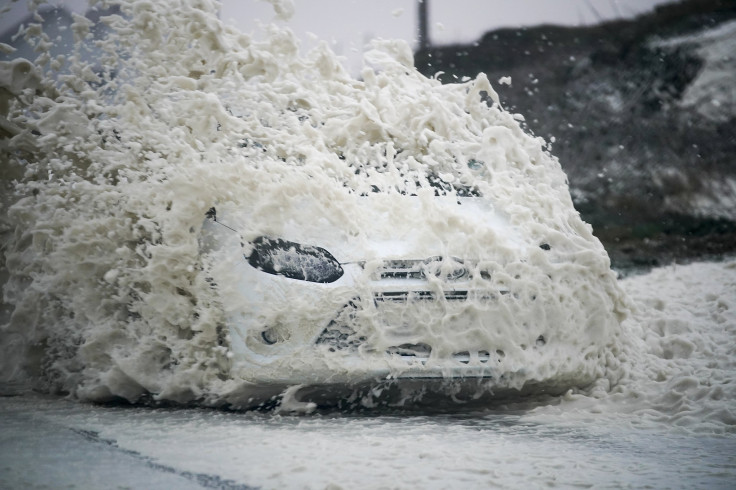Ophelia Strikes Ireland And Kills 3: Photos And Videos Of The Storm

Former Hurricane Ophelia struck Ireland Monday morning, killing three people. The one-time hurricane, which slowed down to a post-tropical cyclone as it hit Ireland, left hundreds of thousands of people without power.
The United Kingdom and Ireland aren’t accustomed to these types for storms, according to reports. Ireland’s weather service, Met Eireann, issued its first red alert for severe weather throughout the country. Officials warned Sunday evening of “violent and destructive gusts” and of “potential loss of life.”
Coastal defences completely breached at Salthill, Galway. The Atlantic now extends to the promenade. #Ophelia pic.twitter.com/qF9B47Ty3i
— David Blevins (@skydavidblevins) October 16, 2017
Perhaps most extraordinary image of #Ophelia: trees felled by storm near #Cork’s #GAA stadium, Páirc Uí Chaoimh. pic.twitter.com/OTMNqbtMNE
— Jon Williams (@WilliamsJon) October 16, 2017
The wind ripped roofs off houses, knocked over trees and caused flooding along the coast. Ireland has not seen a storm as powerful since Hurricane Debbie in 1961, according to Prime Minister Leo Varadkar.
Images from our Roches Point weather webcam.
— Met Éireann (@MetEireann) October 16, 2017
Trees are coming down.
Roches Point has a mean wind speed of 111km/h
Gusts of 156km/h#Ophelia pic.twitter.com/NEsTvuob6M
“This is a national red alert,” said Varadkar in a Monday press conference. “It applies to all cities, all counties and all areas.”
The Irish are dealing with the remnants of Hurricane Ophelia.
— USA TODAY (@USATODAY) October 16, 2017
https://t.co/iVkdmQmU5e pic.twitter.com/cXHYFn2USo
Storm Ophelia – the worst storm to hit Ireland in more than half a century https://t.co/QgQbhnderg pic.twitter.com/GaaWik3csz
— RTÉ News (@rtenews) October 16, 2017
The wind speed of Ophelia reached 109 miles per hour on Ireland’s southern tip, but the U.S. National Hurricane Center downgraded the storm Monday. Over the weekend it was a Category 3.
Much of Ireland was shut down Monday. The storm made landfall around 7 a.m. in the southwestern counties of Cork and Kerry.
Around 385,000 people in Ireland — around 17 percent of its population — are without power, according to the New York Times Monday.
#Ophelia has drawn Saharan dust north to the UK, making the sun appear red this morning. Photo credit: Kelly Norris https://t.co/2qMvYSQjLQ pic.twitter.com/7dioN4vj61
— Met Office (@metoffice) October 16, 2017
Apparently when they programmed the software they were not imagining tropical storms north of 60 deg latitude pic.twitter.com/y6zu7MLsCK
— Bill McKibben (@billmckibben) October 15, 2017
The was headed toward Britain late Monday and into Tuesday, but the country has already felt its effects. London skies were red Monday, as Ophelia carried sand from the Sahara and whipped it over the city.
© Copyright IBTimes 2024. All rights reserved.











